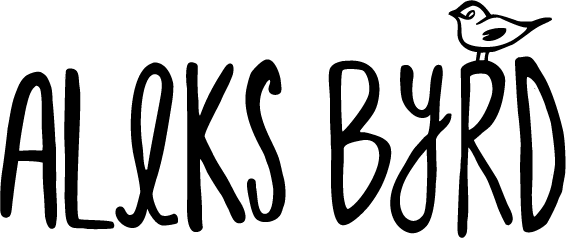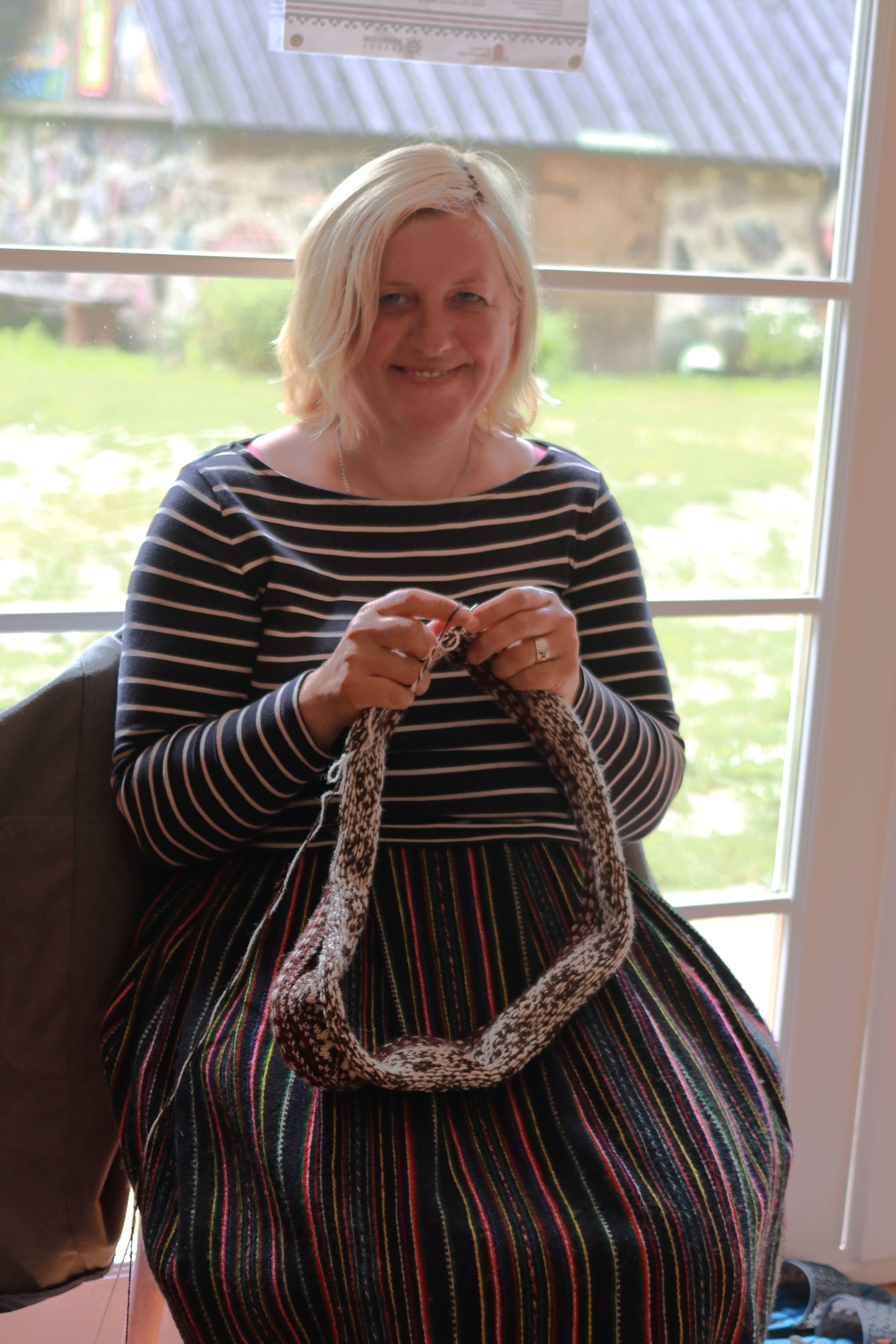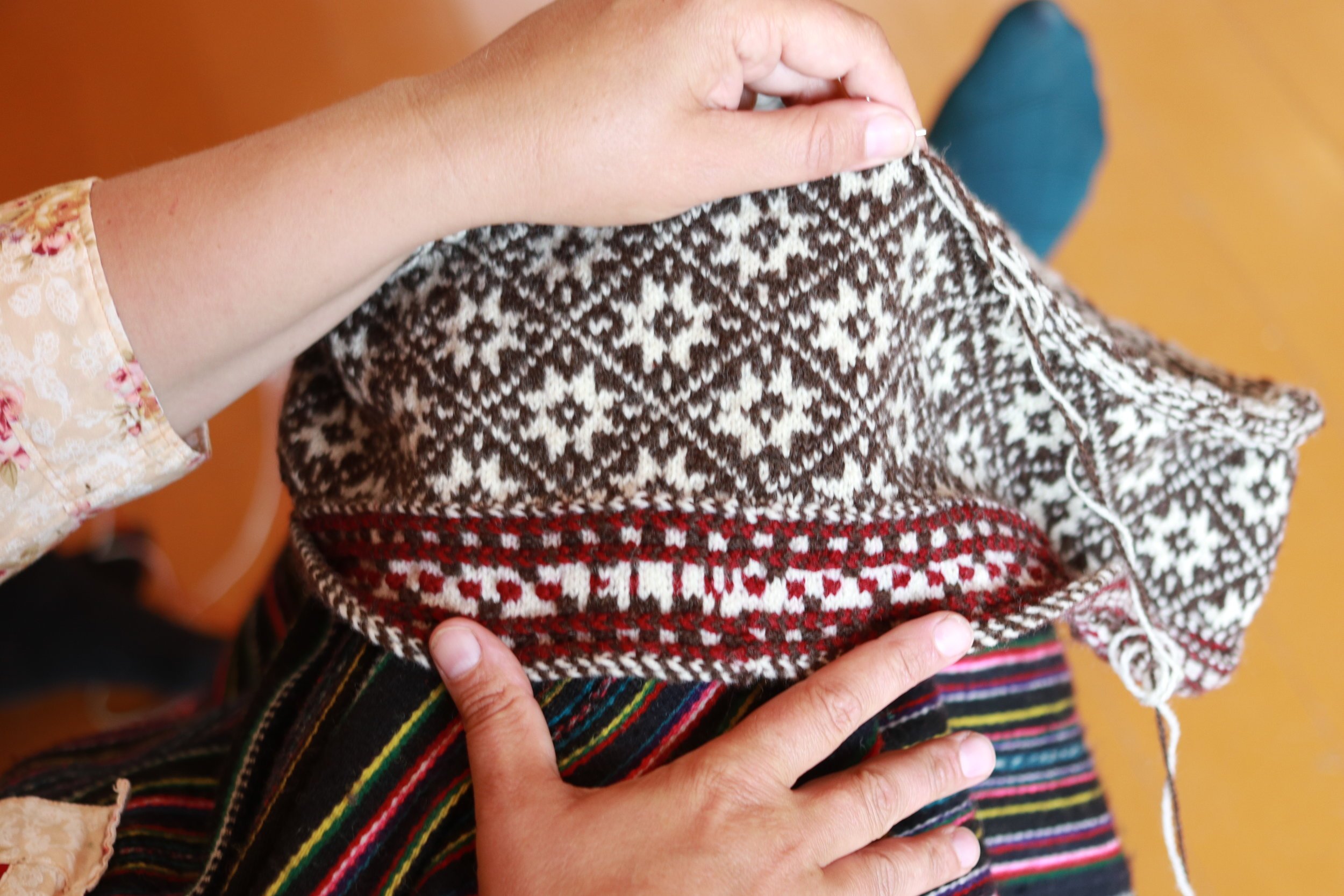Kihnu I Kudumisfestival
Kihnu is a magical island. It's beautiful everywhere you look and full of colour from the landscape to the people. It's been called a treasured island and it most certainly is.
[Estonian/ Eesti keelt] Kihnu on imeline saar. Ilu leidub igal pool kuhu vaatad ja värvi rohke nii inimesed kui maastik. On räägitud et saare on kalliks pidanud ja seda on kohe näha.
The real treasures that make the island so magical and inspiring are the women who do just about everything! These women are true talents, juggling making amazing products like knitwear & blouses & food to running shops and museums as well as coordinating other cultural events. This year they organized the first knitting festival, Kihnu Kudumisfestival. It was a real treat to attend! I have always been intrigued to visit the island and have been in awe of the many knitting styles and techniques unique to this island such as vikkel ( traveling stitch patterns), vits (braids), troi (dense colourwork ganseys). It was an opportunity to learn from some of the masters for three days.
Saare tõeline varandus on naised kes inspireerivad oma talenti ja töötuslikuga. Need naised saavad kõigega hakkama. Nad koovad, õmblevad, keedavad, ja küpsetavad. Nad on tööl muuseumis ja poodides ja siis veel organiseerivad kõik kulturi tegevused. Sel aastal nad organiseerisid esimese Kihnu kudumis festivali. Minul oli suur au sellest osaleda. Mind on alati huviäratanud Kihnu saar ja ma olen alati suurt huvi tundnud Kihnu erinevate kudumis mustritest ja võtetest, näiteks, vikkel,vits, ja Troi. Nüüd oli mul võimalus kolme päeva jooksul meistrite käest õppida.
These masters range in age. The senior masters who are lovely, kind, boisterous and humorous women make any room they walk in come alive! They are so quick with their needles! I never knew that the islanders knit using the throwing style compared to me and a few other who knit continental. More importantly they are generous in sharing their stories and knowledge. It's a way of keeping the traditions and skills alive. They were shocked how many people came to Kihnu to learn to knit their patterns. They are too humble about their knitting work and talents.
Meistrid olid igas vanuses. Kõige vanemad, kes olid tõesti lahked, ilusad ja huumori täis. Kohe kui nad tuppa tulid oli tuba täis elu ja energiat. Nende vardad lausa lendasid. Minule oli huvitav õppida et Kihnu naised viskavad kui nad koovad, inglise stiilis. Vanemad meistrid olid väga lahked oma juttu ja õpetusega. See on üks moodus kuidas nende traditsioonid ja oskus jääb püsima. Neid ehmatas kuulda kui palju naisi tuli Kihnu saarele et õppida Kihnu tehnikat. Nad on lihtsalt liiga tagasihoidlikud oma talenti kohalt.
I was enthralled and honored to sit and listen to them over the three days I was there. I took so many photos!
Minule oli suur au seal istuda ja neid kuulata kolme päeva jooksul. Ma võtsin neist nii palju pilte!
One of my favorite photos. This lovely woman, Marta, encouraged by her friend, lifted up her kõrt (the traditional woven skirt) to reveal the stunning socks she knitted. These beautiful socks and all their detail aren't seen as the kõrt covers them. It was a bit scandalous as she revealed her socks up to her knees.
Üks minu kõige lemmikum pilt oli väga kaunist Martast. Kes pärast teiste naiste ergutamise tõstis oma kõrt’i põlvedeni ja siis oli näha tõesti haruldaselt ilusaid sokke mida muidu ei oleks keegi näinud kuna nad olid tema kõrt’i all peidus. See oli veidi skandaale et ta tõstis oma kõrt’i põlvedeni.
The younger masters who were the leaders and teachers at the festival talked us through the various styles of knitting: socks, mittens, and troi. We all knitted women's sock to get a grasp of all the various stitch patterns used in sock knitting.
Nooremad meistrid juhtisid kava ja festival’i ajal näitasid jutustasid sokki kudumisest, kindad ja Troi. Meie kõik hoolega kudusime naiste sokki nii et meie õpiksime kõik mustrid mis kuuluvad Kihnu sokki kudumise juurde.
My sock progress by the end of the three day festival.
Siin on näha kaugele mina jõudsin oma sokkiga pärast kolme päeva kudumist.
A Kihnu style sock is knit top down beginning with a lace pattern such as a chevron edging, then moves into stranded colourwork and onwards to two sets of vikkel pattens that run along side the leg of the sock and down to the toe. The colourwork section consists of striping bands on either side of the main motif heavy band. Following the final stripe band are what are referred to as "sukahambad" or "sock teeth", this is a pattern that helps transition the colourwork into the all white vikkel section.
Kihnu sokk on kootud ülevalt alla. Alates pitsi mustriga ja siis edasi kahe värviga, edasi tulevad vikkelid mis mõlemalt poolt pärast suurt motiivi. Lõpuks tulevad “hambad” mis aitavad üle minekut valgele vikkel’i osale.
Besides sock knitting there is mitten and troi knitting
Lisaks sokki kudumisele oli kinda ja Troi kudumine.
Mittens & Gloves!
Similar to the design of the socks, mittens consist of a cuff beginning with a braid section then either a lace of entrelac section with some small bands of colourwork where red is used, The larger colourwork done in black (navy or natural dark sheep colour) and white is reserved for the hand.
Kindad!
Sarnane sokki kujundusele, kindad alustuseks on alumine äär kus võib olla pats,pits või lapiline muster ja siis edasi on read kus kahte või kolme värvi on tarvitatud eriti punast. Suurem osa kindast on siis kootud kahe värviga must (või tume sini ja ka loomulik tume lamba vill).
Troi
Elly Karjam is the master Troi knitter. She knits for clients all over the world and is the only Troi knitter on the island. The Troi is a dense pattern gansey style sweater known as a sweater for fisherman of the island.
Elly Karjam on Troi kudumis meister. Tema Troi kampsunid leidub üle maailma. Tema on ainus Troi kuduja Kihnu saarel. Troi on tiheda koega kampsun mida tehti kalurimeestele.
It features a braid and narrow colourwork band at the hem and cuffs using red and white with a darker colour ( black, navy or natural dark sheep colour). The body of the sweater consist of repeating diagonally tiled motifs in the white and dark colour. Elly is clever and knits her name into the colourwork section of the hem to brand each Troi. She custom designs each motif pattern for her clients and keeps track of the designs in a notebook with the details of the clients measurements. Every Troi is unique and made actually to size. She uses Estonian wool.
Troi’l on punutis ja siis kahe värviga kätis ja palistus. Tavaliselt kasutakse punast, valget ja tumendat värvi ( musta, tume sinist, või lamba tumedat värvi). Kampsun’i kerel on motiivid mis korduvad. Elly on hästi kaval ja ta koob oma nime iga kampsuni palistuse. Tal on märkmik kuhu on kõik kliendi mõõdud ja joonis motiivist. Iga tema Troi on tehtud täpse mõõtude järgi klienti jaoks ja ta tarvitab Eesti lõnga.
Everything these women knit gets worn by themselves or the lucky people who purchase their crafts. Kihnu is unique in Estonia as it is the only place where traditional outfits are still worn everyday. Their outfits also evolve with time and trends, with skirt lengths changing with fashion trends and adjustments to the colours and stripes of the skirts. What remains a constant is the red colour.
Kõik mida naised Kihnu saarel valmistavad nad kas kannavad ise või müüvad teistele õnnelikudele külastajatele. Kihnu on erinev selles mõttes et seal ikka naised käivad rahva riides. Kihnu saarel mood muutub ajaga kaasa. Seelikud on kas lõhemad või pikemad ja triipude värvid muutuvad ainult punane värv püsib.
Display of skirts from various decades at the Kihnu Museum
Siin on seelikud üle aegade Kihnu muuseum ‘is
All the woven skirts called a kõrt are woven by the women using local wool. The colouring of the skirt represents what age group you are; younger women wear bright colorful red skirts which get darkened with navy stripes as one grows older. Women in the period of mourning will also sport a darker skirt. Each skirt is hemmed with a bright red woven braid/ band. Married women will wear an apron as well s a headscarf out of brightly coloured and elaborate paisley prints. This printed fabric is also used to sew blouses. Any left overs from sewing blouses and aprons is used to create little zig zag edges added to the blouse along either side of the buttons down the front.
Telgedel kootud seelikud on kõrt’id ja nad on tehtud Eesti lõngadest mida nad ise värvivad. Kõrt’i värv tunnistab naise vanust, noored tüdrukud kannavad hästi kirjud seelikud ja see punane värv muutub tumedamaks mida vanemaks naine jääb. Abiellus naine kannab põlle mis on hästi värvi riikas. Kihnu naised ei raiska midagi ja riide tükkid mis jäävad üle põlle ja pluusi tegemisest tehakse siksakideks mis on siis pandud pluusidele nõppide kõrvale.
It was a wonderful inaugural festival. I can't wait to hopefully return next year to learn more!
See kudumis festival oli tõesti tore elamus ja ma ei jõua ära oodata järgmist festival’i tuleval aastal. Mul on palju veel õppida!
If your interested in learning more about the knitting from Kihnu and trying out some the techniques yourself there are some great books written by some of the master themselves or with much consultation from them:
Kui oled huvitatud Kihnu kudumisest ja tahad ise proovida siis on mitu raamatut mis Kihnu meistrid on kirjutanud.
This is the charming author Rosaali or Roosi
- Estonian Knitting 1 Traditions & Techniques by Anu Pink, sir Reimann, & Kristi Jõeste
- Eesti Silmuskudumine 2 Sukad ja Sokid ( Estonian Knitting 2 Stockings &Socks) by Anu Pink- currently only available in Estonian
- Loomise Vägi. Kihnu Roosi Käsitöökogu by Kärt Summatavet- currently only available in Estonian















